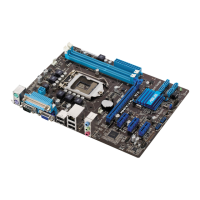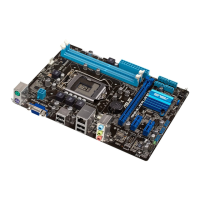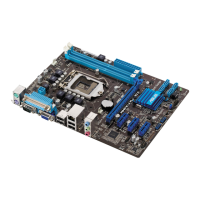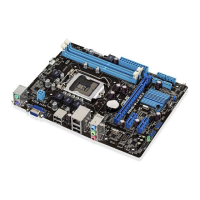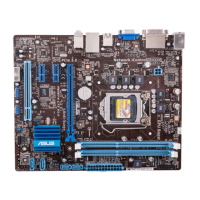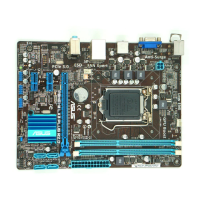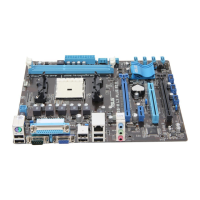
Do you have a question about the Asus P8H61-M LX PLUS R2.0 and is the answer not in the manual?
| Non-ECC | Yes |
|---|---|
| Memory channels | Dual-channel |
| Memory slots type | DIMM |
| Number of memory slots | 2 |
| Supported memory types | DDR3-SDRAM |
| Maximum internal memory | 16 GB |
| Supported memory clock speeds | 1066, 1333, 1600, 1800, 1866, 2000, 2133, 2200 MHz |
| Processor socket | LGA 1155 (Socket H2) |
| Processor manufacturer | Intel |
| Compatible processor series | Intel Celeron, Intel Pentium |
| Maximum number of SMP processors | 1 |
| Number of SATA II connectors | 4 |
| Number of Parallel ATA connectors | - |
| USB 3.2 Gen 1 (3.1 Gen 1) connectors | 0 |
| USB 2.0 ports quantity | USB 2.0 ports have a data transmission speed of 480 Mbps, and are backwards compatible with USB 1.1 ports. You can connect all kinds of peripheral devices to them. |
| Component for | PC |
| Power source type | ATX |
| Motherboard chipset | Intel® H61 |
| Audio output channels | 7.1 channels |
| Motherboard form factor | micro ATX |
| Supported storage drive interfaces | SATA II |
| Maximum resolution | 2048 x 1536 pixels |
| PCI Express x1 slots | 3 |
| PCI Express slots version | 2.0, 3.0 |
| Networking features | Gigabit Ethernet |
| BIOS type | AMI |
| ACPI version | 2.0a |
| BIOS memory size | 64 Mbit |
| Depth | 183 mm |
|---|---|
| Width | 244 mm |
Brief greeting and introduction to the motherboard.
Lists all items included in the motherboard package.
Highlights key technologies and functionalities of the motherboard.
Important precautions before installing hardware components.
Describes the physical layout and components of the motherboard.
Instructions for installing and handling the CPU socket.
Details on installing and configuring DDR3 DIMM memory modules.
Information on installing expansion cards like PCI Express.
Explains the function and usage of jumpers, like clearing CMOS.
Details on rear panel and internal connectors for various peripherals.
Information on installing operating systems and drivers from the support DVD.
Precautions to prevent electric shock and equipment damage.
Guidelines for safe installation and handling of the motherboard.
Explains the structure and content of the user manual.
Describes symbols and formatting used throughout the manual.
Information on accessing ASUS online resources for support and updates.
Details on supplementary documents that may be included with the product.
Procedures for backing up, updating, and recovering the system BIOS.
Guide to accessing and navigating the BIOS setup utility.
Overview of system information and basic settings in the BIOS.
Options for overclocking and performance tuning.
Detailed configuration options for CPU, SATA, USB, and onboard devices.
Settings for managing SATA storage devices and modes.
Settings related to system agent and graphics configuration.
Options for managing USB devices and legacy support.
Settings for enabling/disabling integrated hardware like audio and LAN.
Settings for the serial port (COM) and its base address.
Settings for the parallel port (LPT) and its modes.
Configuration options for Advanced Power Management features.
Settings for enabling or disabling the UEFI network stack.
Displays system temperatures, voltages, and fan speeds.
Options for configuring system boot order and behavior.
Access to utility functions like BIOS flashing and SPD information.
Options for loading defaults, saving, or discarding BIOS changes.
Regulatory compliance statements (FCC, IC, VCCI, KC, REACH) and recycling info.
Details on how to contact ASUS support globally.
